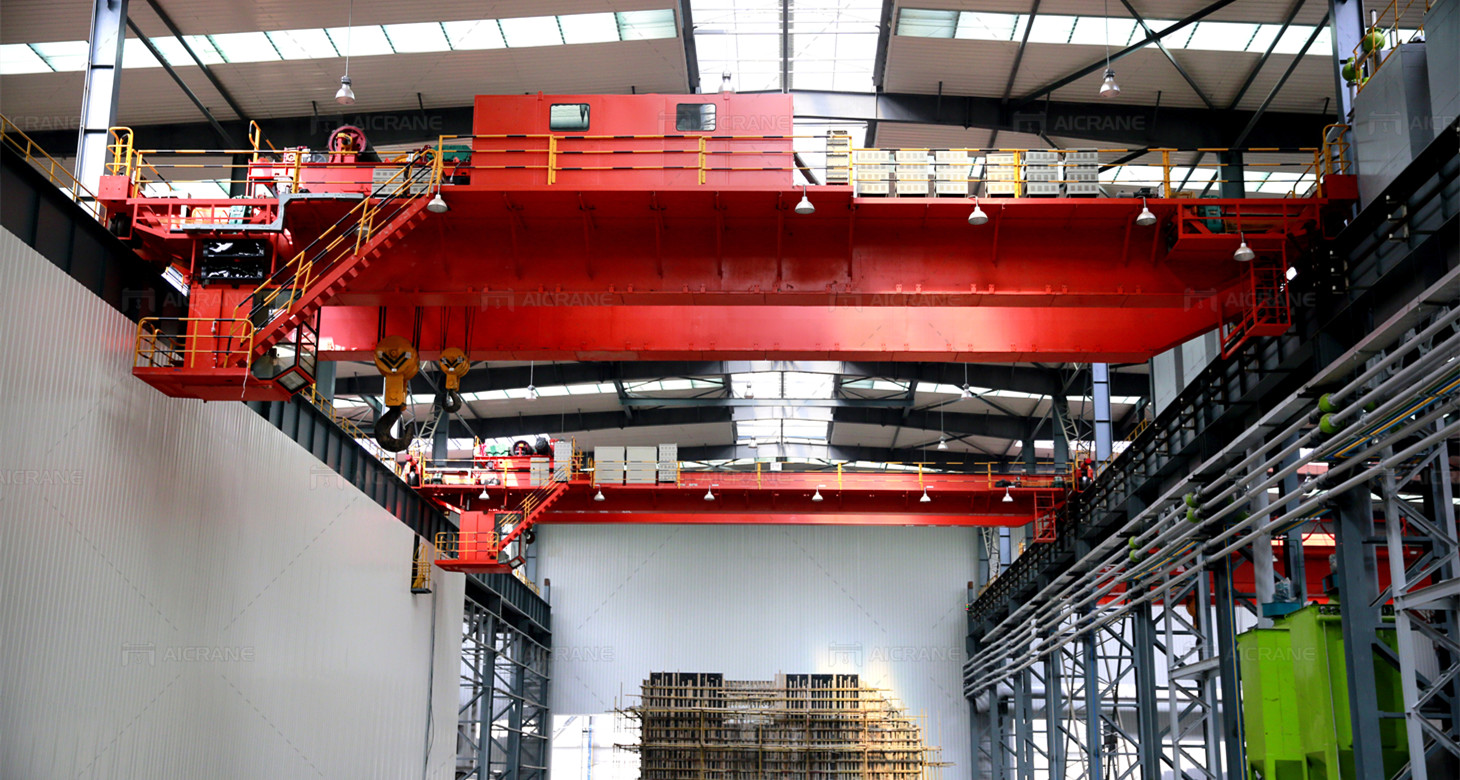A 50 ton double girder overhead crane is a critical piece of equipment in various industries, from manufacturing to construction, due to its ability to lift and transport heavy loads with precision and efficiency. However, like all machinery, it requires regular maintenance and occasional repairs to ensure optimal performance and safety. This passage outlines a comprehensive guide on how to repair a 50 ton double girder overhead crane, focusing on diagnosing issues, performing repairs, and ensuring the crane returns to peak operational condition.

Initial Inspection and Diagnosis
The first step in repairing a 50 ton double girder overhead crane is to conduct a thorough inspection to diagnose the issues accurately. This involves:
Visual Inspection: Check for visible signs of wear and tear, such as cracks, corrosion, deformation, or broken components on the girders, trolleys, hoists, and end carriages.
Operational Test: Run the overhead crane through its operations to identify functional issues, such as unusual noises, jerky movements, or failures in lifting, lowering, or traveling.
Electrical Systems Check: Inspect the electrical components, including wiring, control panels, and limit switches, for signs of damage or malfunction.
Mechanical Systems Check: Examine mechanical parts like gears, bearings, and brakes for wear and proper lubrication.
Common Issues and Their Solutions
Based on the initial inspection, you may encounter several common issues. Here’s how to address them:
Worn or Damaged Girders
Problem: Cracks or deformations can compromise the structural integrity of the girders.
Solution: If minor, weld the cracks using appropriate welding techniques and materials. For significant damage, you may need to replace the girders entirely. Always consult with a structural engineer before proceeding with repairs.
Trolley and Hoist Malfunctions
Problem: Issues with the trolley and hoist can prevent smooth operation, affecting the double girder overhead crane’s ability to lift and transport loads.
Solution: Inspect and replace worn-out gears, bearings, and motors. Ensure the hoist drum is not cracked or deformed and the wire rope is free from fraying or kinks. Lubricate moving parts regularly to ensure smooth operation.
Electrical Component Failures
Problem: Electrical issues can lead to control malfunctions, rendering the double girder overhead crane inoperative or unsafe.
Solution: Replace damaged wiring and faulty control panels. Ensure all connections are secure and clean. Test and replace malfunctioning limit switches and sensors.
Brake Problems
Problem: Worn-out or malfunctioning brakes can lead to safety hazards.
Solution: Inspect brake pads and discs for wear and replace them as necessary. Adjust the brake settings to ensure they engage and release correctly. Regularly check and replenish brake fluid if applicable.
End Carriage and Wheel Issues
Problem: Damaged wheels or misaligned end carriages can cause tracking problems.
Solution: Inspect the wheels for wear and replace them if necessary. Ensure the end carriages are aligned correctly with the rails. Adjust or replace worn-out bearings.

Repair Procedures
Once you’ve identified the issues, follow these procedures to repair the double girder 50 ton overhead crane:
Safety First: Before starting any repair work, ensure the double girder overhead crane is disconnected from the power supply and tagged out to prevent accidental operation. Use appropriate personal protective equipment (PPE) and follow all safety protocols.
Component Replacement: For parts that need replacement, follow the manufacturer’s guidelines. Ensure new components are compatible with the crane’s specifications. Use high-quality parts to ensure longevity and reliability.
Welding and Fabrication: If welding is required, use certified welders who follow industry standards. Ensure the double girder overhead crane structure is not compromised during the welding process. Post-weld inspections are essential to verify the quality of the welds.
Electrical Repairs: For electrical repairs, use certified electricians. Test the electrical system thoroughly after repairs to ensure all components function correctly and safely.
Lubrication and Adjustments: Lubricate all moving parts according to the recommendations of overhead crane manufacturer. Make necessary adjustments to align components and ensure smooth operation.
Post-Repair Testing
After completing the repairs, conduct a series of tests to verify the crane’s functionality and safety:
Load Testing: Perform a load test with a safe load (not exceeding the double girder overhead crane’s rated capacity) to ensure it can lift, hold, and move the load without issues. Gradually increase the load to the maximum rated capacity while monitoring the crane’s performance.
Operational Testing: Run the double girder overhead crane through its entire range of movements, including lifting, lowering, and traveling along the runway. Check for smooth and accurate movements.
Safety Checks: Verify that all safety devices, such as limit switches, emergency stops, and brakes, are functioning correctly. Ensure all safety interlocks are in place and operational.
Documentation: Record all repairs and tests in the double girder overhead crane’s maintenance log. This documentation is crucial for future reference and regulatory compliance.
Preventive Maintenance
To minimize future repairs and ensure the longevity of the double girder overhead crane, implement a robust preventive maintenance program:
Regular Inspections: Schedule regular visual and operational inspections to identify and address issues early.
Routine Maintenance: Perform routine maintenance tasks such as lubrication, cleaning, and tightening of bolts and connections.
Component Lifespan Tracking: Keep track of the lifespan of critical components and replace them before they fail.
Training: Ensure operators and maintenance personnel are adequately trained in 50 ton double girder overhead crane operation and maintenance procedures.
Repairing a 50 ton double girder overhead crane requires a systematic approach to identify and address issues accurately. By following the steps outlined above, including thorough inspections, proper repairs, rigorous testing, and preventive maintenance, you can ensure the double girder overhead crane remains safe, reliable, and efficient. Regular maintenance and timely repairs not only extend the life of the double girder overhead crane but also enhance productivity and safety in your operations.